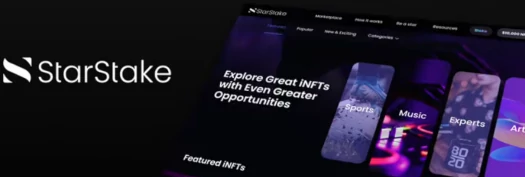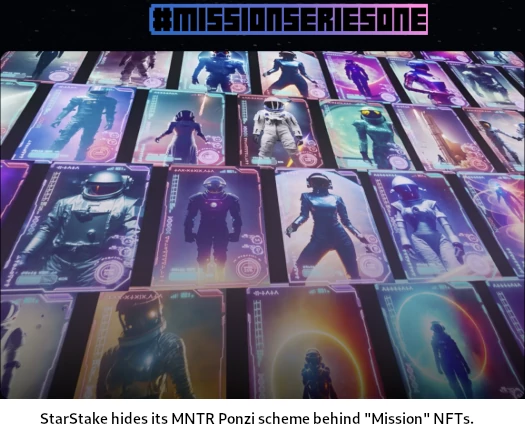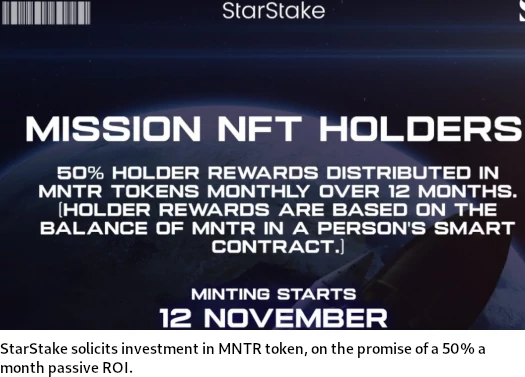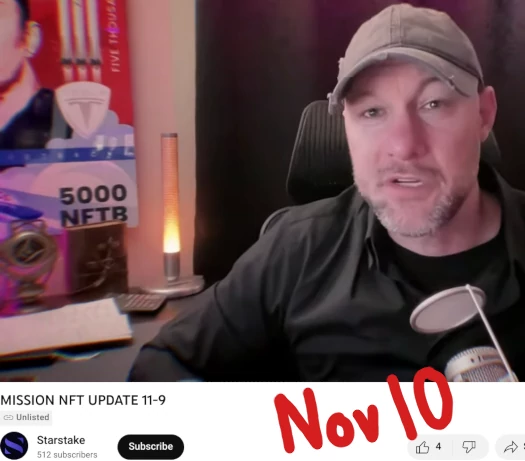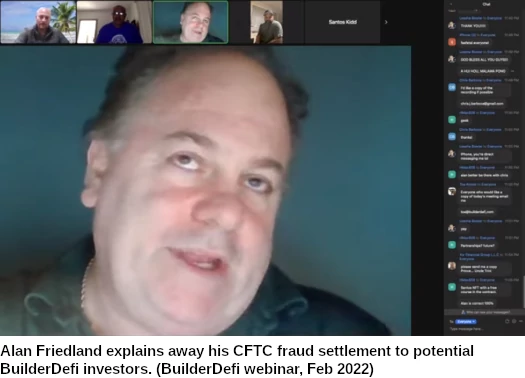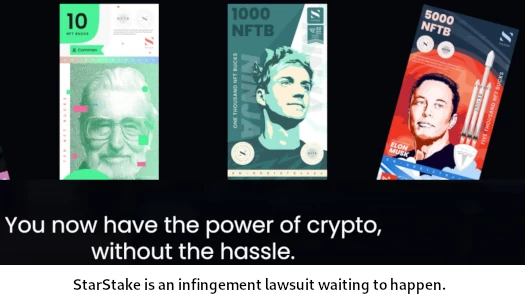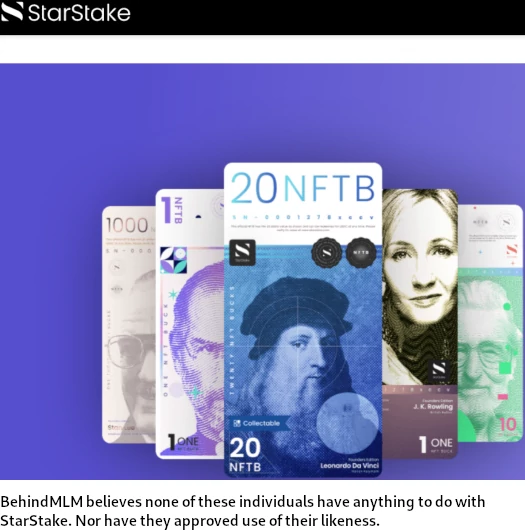Alan Friedland’s NRGY Ponzi scheme has long since collapsed.
It was the typical Ponzi pump and dump, never recovering from the initial withdrawal theft of funds by early investors.
NRGY investors are now being funneled into StarStake, a failed NFT platform that recently launched a fraudulent investment scheme.
StarStake pitches itself as an “NFT based royalty marketplace.”
I don’t really want to get into the marketplace because the investment side of StarStake has nothing to do with it.
StarStake’s new Ponzi scheme revolves around MNTR tokens/coins (I’m going with tokens).
StarStake affiliates invest $100 a pop. In return they get $100 worth of MNTR tokens and a “Mission” NFT.
Invested in MNTR tokens are locked up for 36 months. Over the first twelve months, StarStake affiliate investors receive 50% of MNTR tokens invested in each month.
50% a month might sounds ridiculous but keep in MNTR tokens are generated out of thin air at little to no cost (I believe MNTR is an ERC-20 shit token).
What isn’t ridiculous is the securities fraud committed as a result of this process, making StarStake a Ponzi scheme.
Early MNTR investors, most of whom are CompCoin and NRGY bagholders, have already been onboarded. They’re receiving 50% of invested MNTR token funds each month, hoping to cash out funds invested by subsequent affiliate investors bagholders.
StarStake has no verifiable external source of revenue, other than new investment. Like NRGY, NRGYGo and BuilderDEFI before it, MNTR is a closed-loop smart-contract Ponzi scheme.
On the MLM side of things, StarStake’s MNTR scheme combines referral commissions with a transaction bonus pool.
StarStake pays referral commissions down two levels of recruitment on MNTR investment (unilevel):
- level 1 (personally recruited affiliates) – 10%
- level 2 – 5%
Affiliates who invest $2500 or more receive shares in a bonus pool, made up of an undisclosed percentage of collected StarStake transaction fees.
That’s it. That’s StarStake’s new MNTR “Mission NFT” Ponzi scheme.
As to how we got here, BehindMLM last checked in on NRGY back in February. Back then Friedland was trying to get BuilderDefi off the ground.
Today SimilarWeb tracks negligible traffic to BuilderDefi’s website; i.e. the third NRGY Ponzi scheme iteration has collapsed.
BuilderDefi promised 5% a week on BuilderToken investment, with the original investment again locked for forty weeks.
Contrast this to StarStake’s MNTR scheme, which pumps the return to 50% a week and extends the initial investment lockout to 36 months (~156 weeks).
While Alan Friedland owns StarStake, his partner in crime Chris Hawk is CEO and face of the scheme.
Speaking on an unlisted StarStake marketing video, Hawk explained the NRGY –> StarStake transition:
[1:44] If you’re an NRGY person, if you were part of the NRGY platform … and you told people about that, we imported the database over to StarStake.
NRGY affiliate genealogies are tied to the wallet NRGY affiliate investors originally signed up with.
From that same video, here’s Hawk’s breakdown of StarStake’s MNTR investment scheme;
[12:44] Those Minter tokens are locked up in the smart contract for you. It’s an investment in a way, because y’know, that’s locked up for three years. Which will fly by.
By the end of three years, we expect this thing, MNTR Coin, will be doing alright.
But remember, you get those 50% rewards every single month. So 50% of the Minter tokens. 50% of the Minter tokens you got at mint, you’ll get dropped every month.
We got people saying they’re going to be buying one hundred at a time, just because of this opportunity.
At time of publication, neither StarStake, Alan Friedland or Chris Hawk are registered with the SEC.
BehindMLM has been tracking NRGY since it first emerged in early 2021. Friedland initially hid his involvement in the scheme, which fell apart after BehindMLM outed him as NRGY’s owner.
The reason Friedland wanted to keep a low profile is he was in the midst of a CFTC commodities fraud lawsuit.
The CFTC went after Friedland for CompCoin and FinTech Investment Group, a Ponzi scheme built around a fictional ART trading bot.
Friedland settled the CFTC’s fraud allegations for $1.8 million in April 2022.
Despite settling one regulatory lawsuit, Friedland’s fraud has continued. StarStake originally launched as part of NRGY in December 2021 (screenshot below is from late 2021).
StarStake flopped, eventually prompting the MNTR investment scheme reboot earlier this month.
All I’ll say about StarStake outside of the MNTR investment scheme is that its an infringement lawsuit waiting to happen.
While BehindMLM isn’t tracking StarStake outside of its fraudulent MLM investment scheme, YouTuber No Pants Profits covers StarStake in greater detail if you’re interested.
After Mission NFT investment runs dry, Hawk has signalled plans to launch additional investment schemes as StarStake NFT “series”.
As of November 16th, Hawk claims around $630,000 has been invested into MNTR.
Under US law, StarStake’s MNTR passive investment scheme constitutes a security. This shifts regulatory jurisdiction from the CFTC to the SEC, and potentially the DOJ if wire fraud and money laundering charges come into play.
Whether US authorities take further action against Friedland remains to be seen.
